Actually, Spam Is Good

Straight out of the can, Spam has the mouthfeel of a pinkish pâté and the look of congealed goo, putting it in stark contrast with artisanal cookery. "It doesn't check any of the boxes of ethically sourced, local, healthy, or organic," says Kamala Saxton of Seattle's Korean-Hawaiian restaurant chain Marination. "It's made in Minnesota by a big food conglomerate, and it has the highest amount of sodium of any meat you've ever had."
But ... Spam is delicious. When seared, the fat crisps up, making the savory slice of meat a worthy swap-in for bacon—though with a little more body—and adding a salty note to a wide range of dishes. And now, chefs from New York to Los Angeles to Seattle are serving up the tinned meat—many as an homage to their childhoods growing up in places like Hawaii, Korea, and the Philippines, where American GIs left cans of it behind. In the years after World War II and the Korean War, as resources remained scarce, the shelf-stable mixture of pork shoulder, ham, salt, water, potato starch (to help bind the emulsion), and sugar and sodium nitrite (to preserve the meat), endured in these locales, integrating into their cuisines. "Now Spam is so much a part of Korean culture, some people give Spam gift sets to friends and family for the holidays," says JP Park, chef-owner of Atoboy in New York City.
You may remain skeptical, so we gathered the best dishes from chefs around the country who swear by the canned meat. Time to become a Spam convert.
Better Than a Pulled Pork Slider
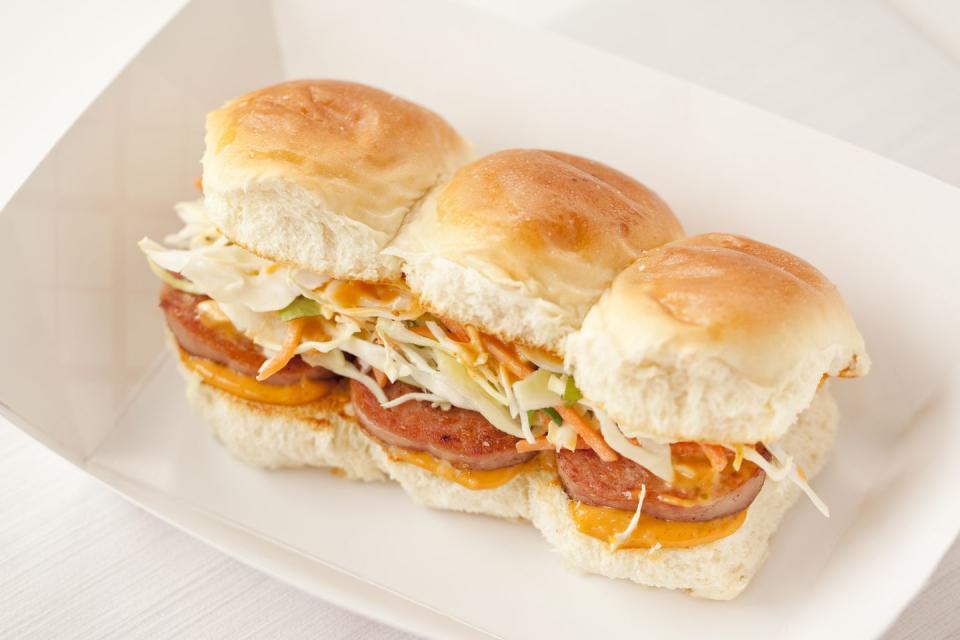
When Saxton first opened a Marination food truck, the Spam sliders were the least popular item on the menu. "It's a rectangular slab of pressed meat in a can that can have a shelf life of years, so if you didn't grow up eating it, there will be apprehension," Saxton says. Her team adopted a catchphrase, telling fence-sitters, "Don't be Spamprehensive." Within a year, the sliders were one of their best sellers. "For these sliders, it's the combination of the saltiness of the Spam on a Hawaiian sweet roll with the combination of our slaw," she says. "It's salty, tangy, sweet."
A More Decadent Fried Rice
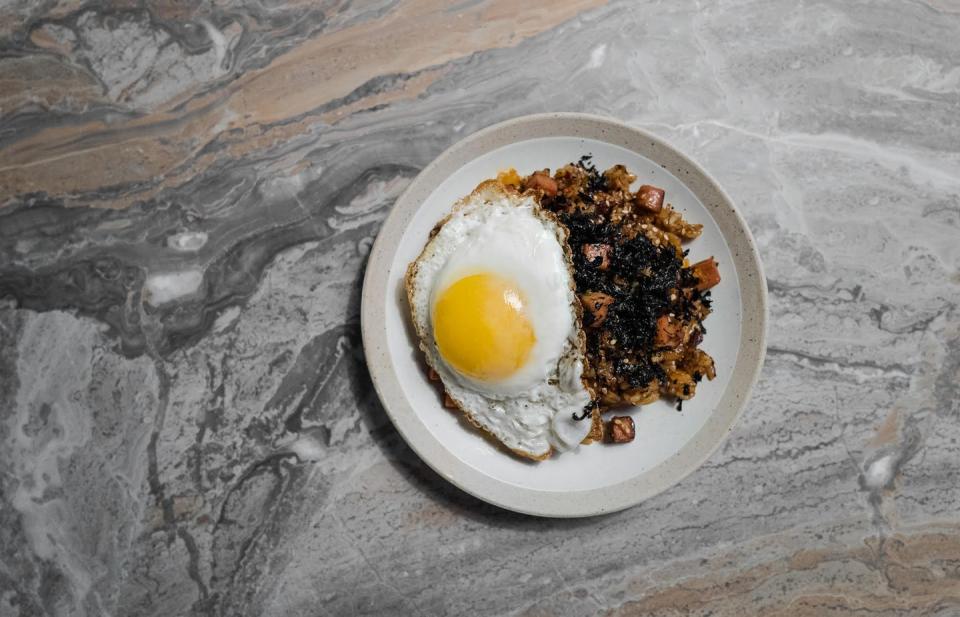
Fried rice is an unbeatable comfort food, meaning it is fatty as hell. Might as well add Spam to all that oil so it tastes even better. When cooking Spam fried rice, Park suggests frying off the meat so the rendered fat begins to mix with the rest of the oil in the pan. That oil gets infused with the salty pork flavor of the Spam, which seasons the rice and unifies the dish. Park makes Spam fried rice a home, where he adds kimchi to give it a bit of funkiness. Find his recipe here.
Sushi, Kind Of
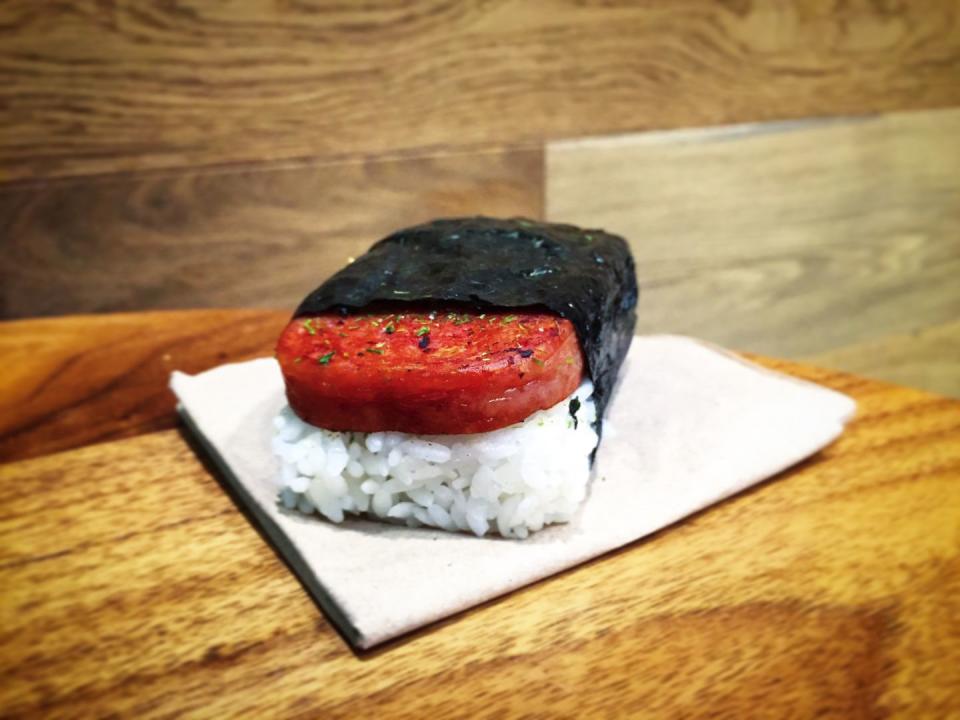
Last fall, the recently crowned Top Chef champion Brooke Williamson opened her love letter to Hawaiian cuisine, Da Kikokiko. At this little Los Angeles eatery you can order Spam musubi—a slab of seared Spam perched atop a brick of sticky rice and held together with a band of nori—which was created in Hawaii by Japanese immigrants. The rice provides a blank canvas that allows the rich Spam flavor to dominate, while contributing needed texture to each bite of soft meat.
Spam with a Southern Twist
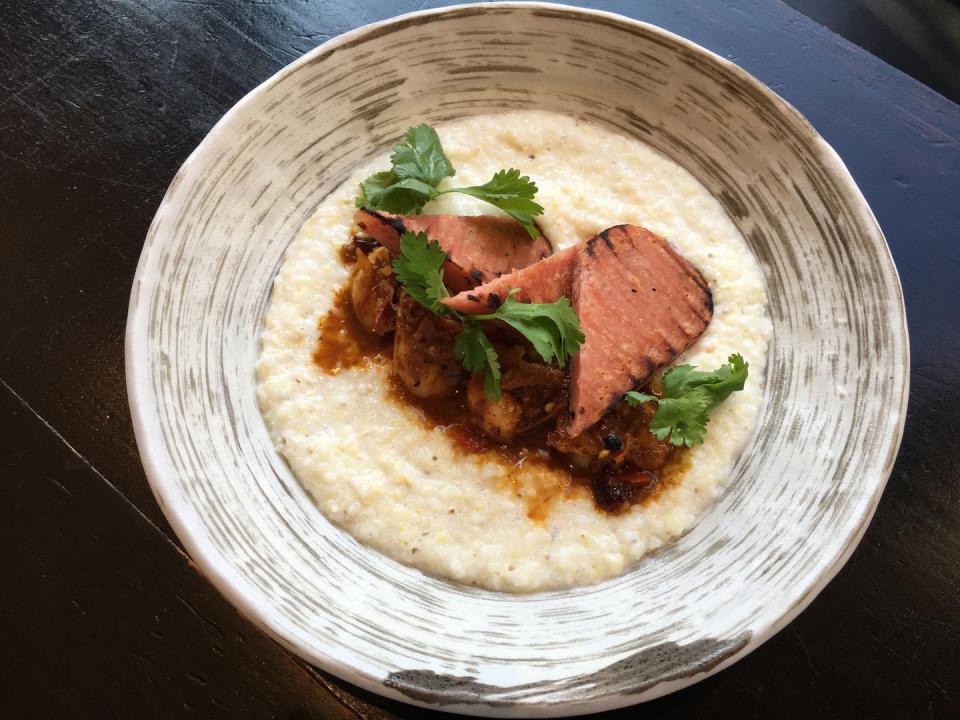
Chef Dale Talde's mother cooked a pork-heavy diet of Filipino-American food for her family, including Spam when longaniza—a Filipino sausage—was unavailable. Never one to worry about being faithfully authentic to culinary traditions, Talde's cooking remains a mash-up of cultures at his Brooklyn restaurant. These days, he gives Spam a Southern spin by replacing the lardons in a low-country shrimp and grits with Spam, which he smokes before searing off. "Spam is a staple in my household, cooked six ways till Sunday," Talde says, "but my favorite is when it's cooked crispy like bacon." Find his Spam, shrimp, and grits recipe here.
Grind-Your-Own Spam
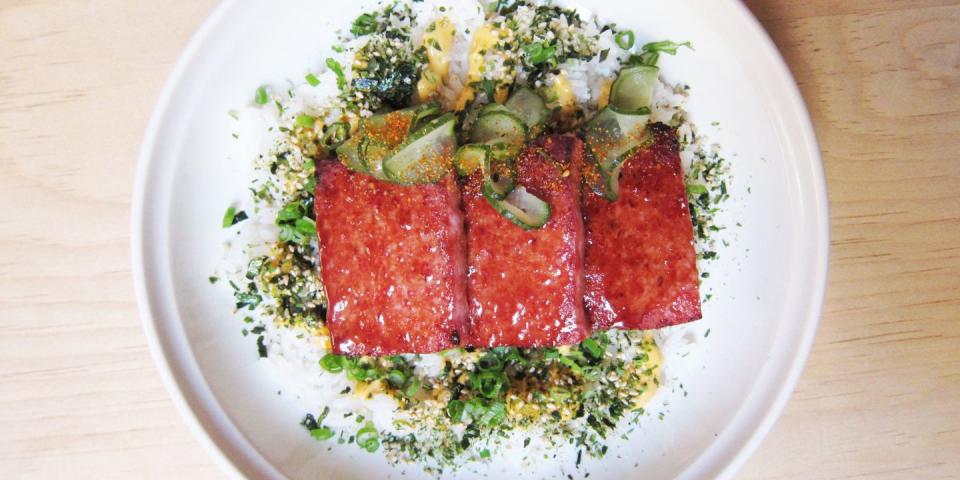
"Artisanal Spam" seems oxymoronic, but not from the kitchen of acclaimed chef Ravi Kapur, a Hawaii native who grew up on canned meat but won't eat commercial Spam anymore. At Liholiho Yacht Club in San Francisco, Kapur grinds together nine parts pork shoulder with one part ham, presses it, then glazes it with tamari (similar to soy sauce) and brown sugar to add some salty sweetness. He serves his dish as a simple deconstruction of musubi, layering an unhealthy amount of the artisanal meat over Calrose sticky rice (like the kind you use in sushi), along with toasted sesame seeds, nori, pickled cucumbers, and togarashi.
Spam, Plus a Heart Attack
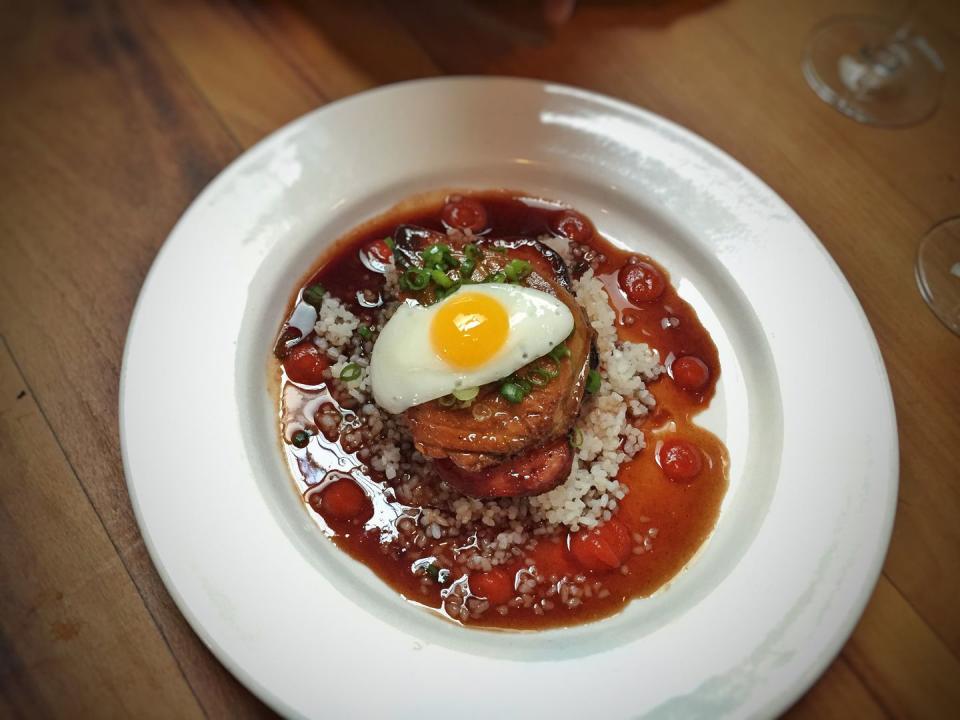
Chefs Jon Shook and Vinny Dotolo take loco moco, another classic Hawaiian dish, to absurd levels at Animal in L.A. Back in Hilo, Hawaii, where loco moco was born, white rice is topped with a hamburger, gravy, and Spam—legend has it the dish was originally created as an inexpensive calorie bomb for high school football players. At Animal, long a bastion of elevated stoner fare, Shook and Dotolo turned the loco moco into a meal for those craving sensory overload. Atop the burger and Spam, they add a dollop of foie gras and swap out the gravy for teriyaki sauce; the tanginess of the teriyaki helps cut the richness of the foie gras. Better yet, the Spam provides saltiness comparable to what you'd get in a bacon burger.
Spam for the Summer
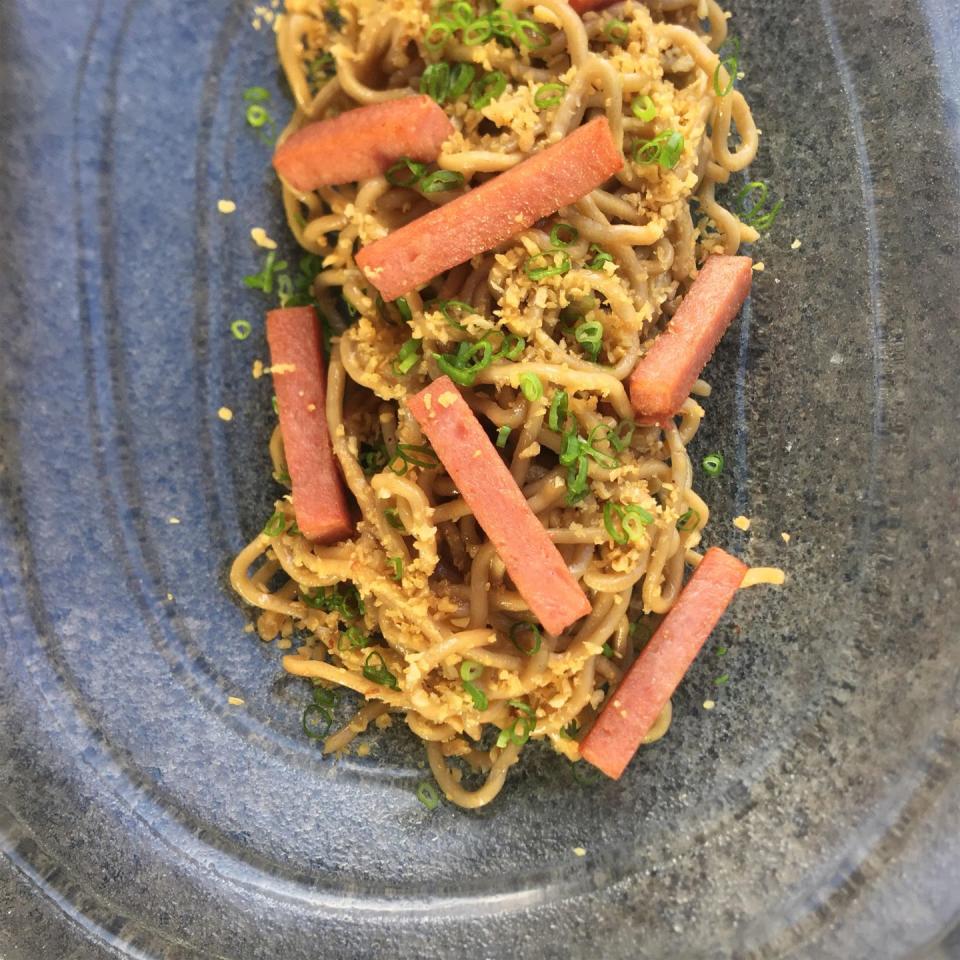
Instead of a bowl of hot ramen, Top Chef alum Sheldon Simeon says that in Hawaii, the locals prefer to fry ramen-like saimin noodles with a ton of garlic when temperatures rise. Simeon himself starts by boiling off the noodles, then frying them in garlic oil and finishing with fried garlic and garlic chives. His topper is usually Spam, chopped and then crisped up. "We don't always have roast pork or pork belly laying around. [Spam] is the go-to protein when you don't have anything else available," he says. "The saltiness of Spam works so well with the garlic noodles." Find the recipe here.
You Might Also Like

